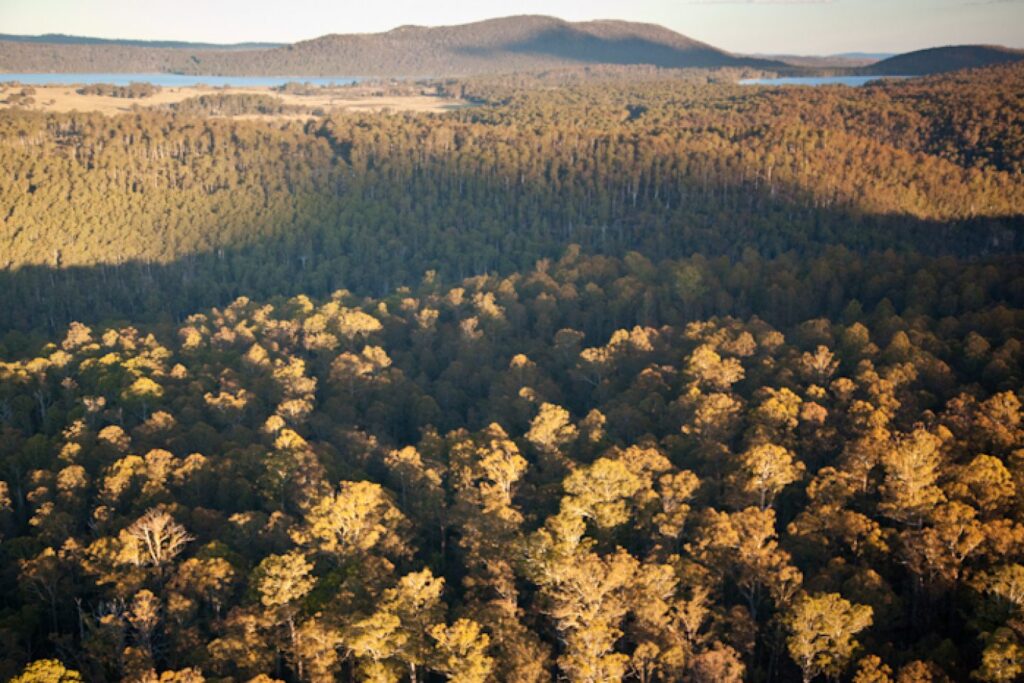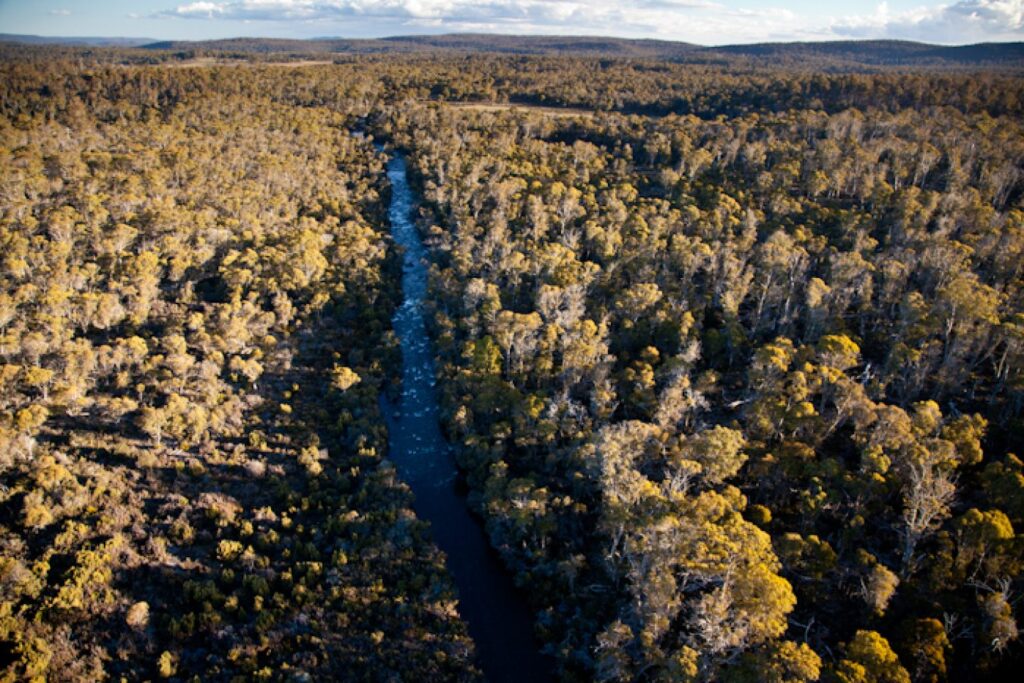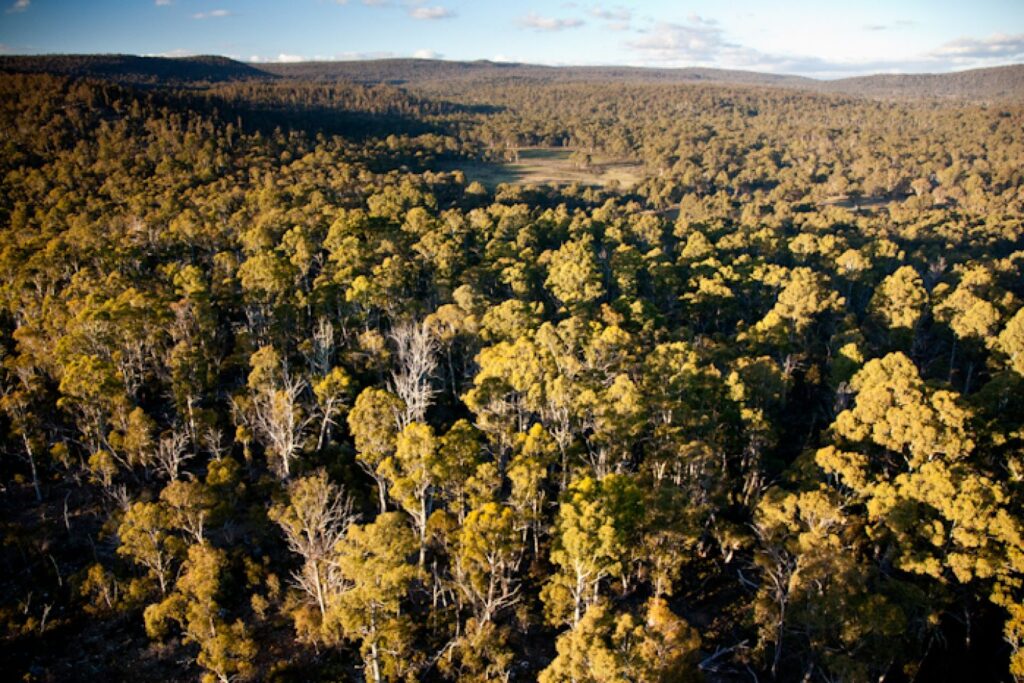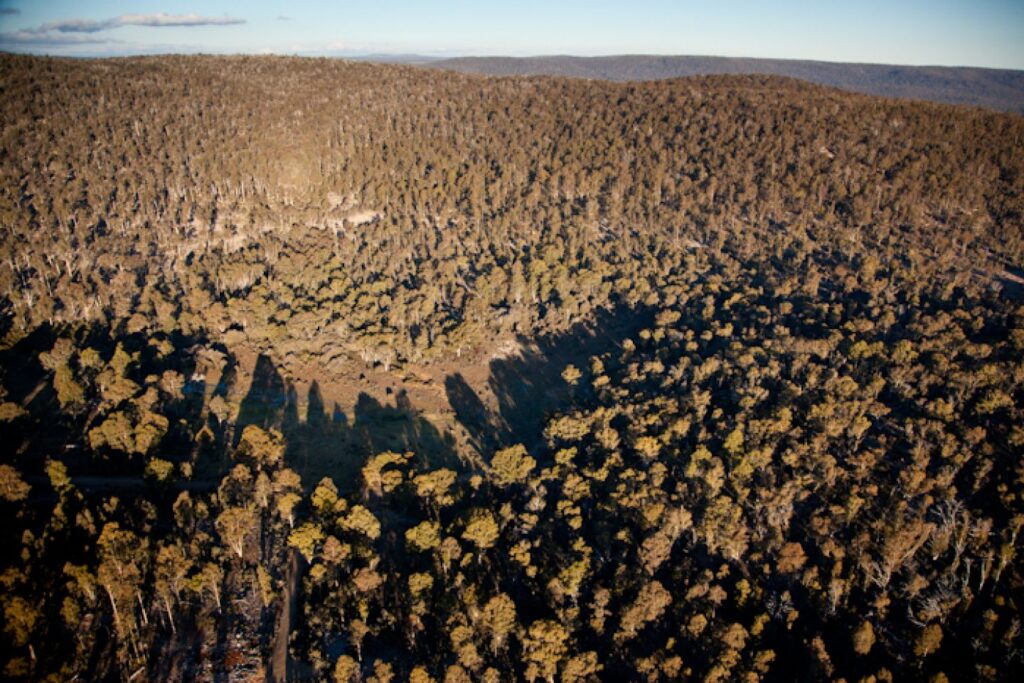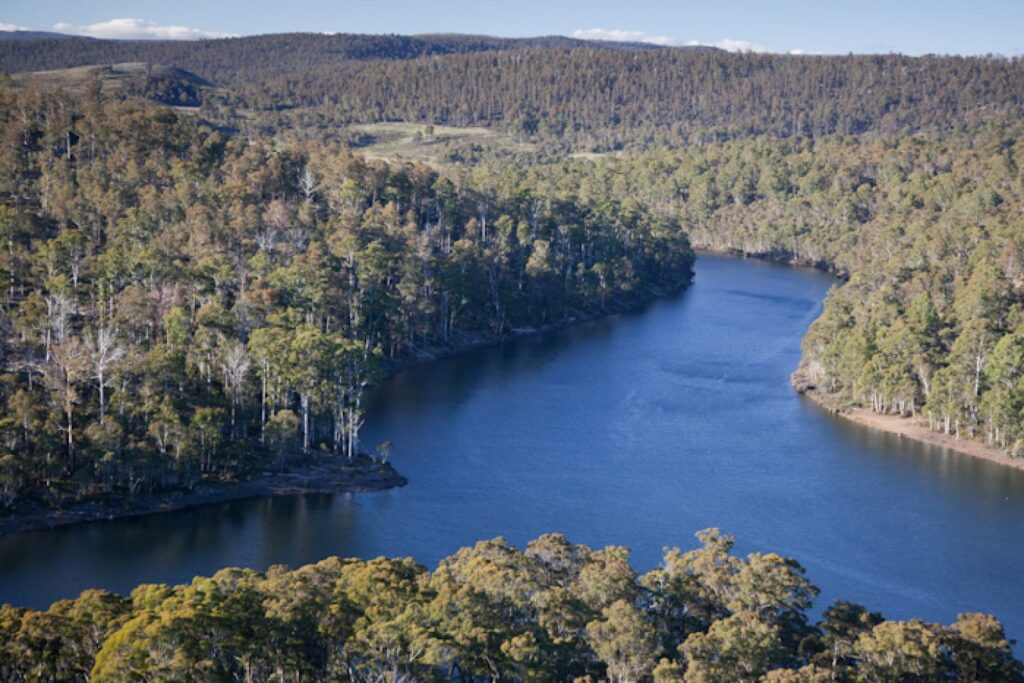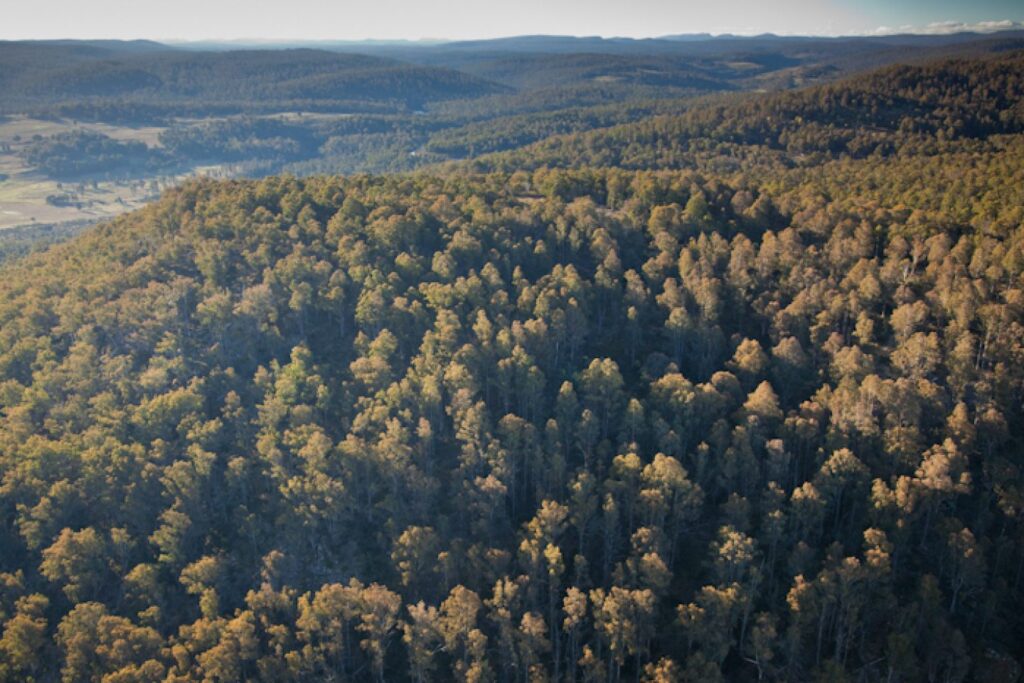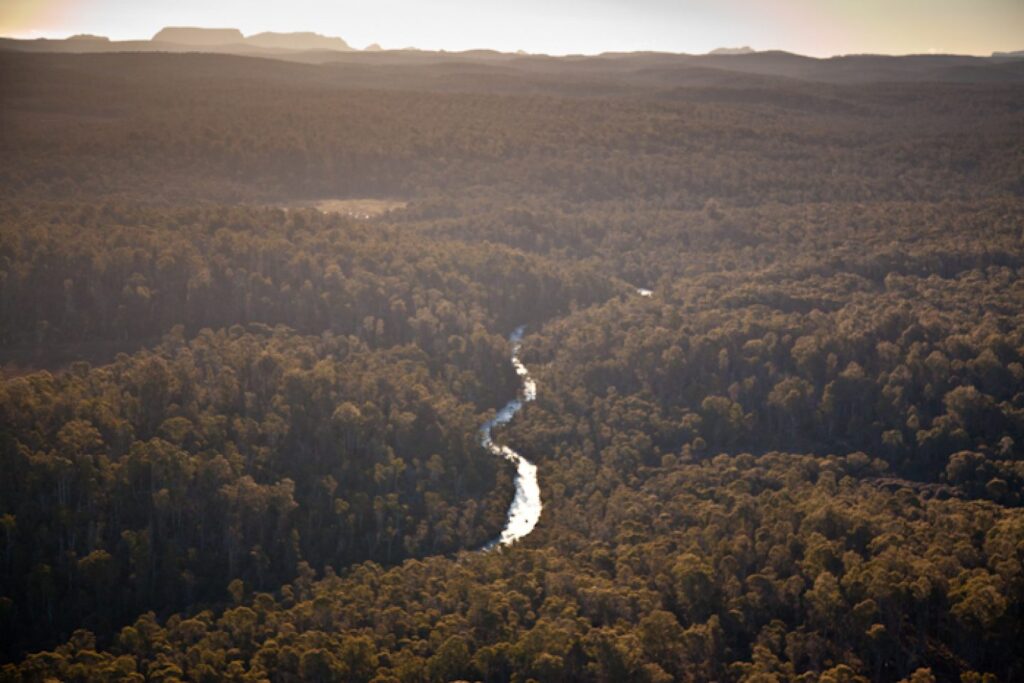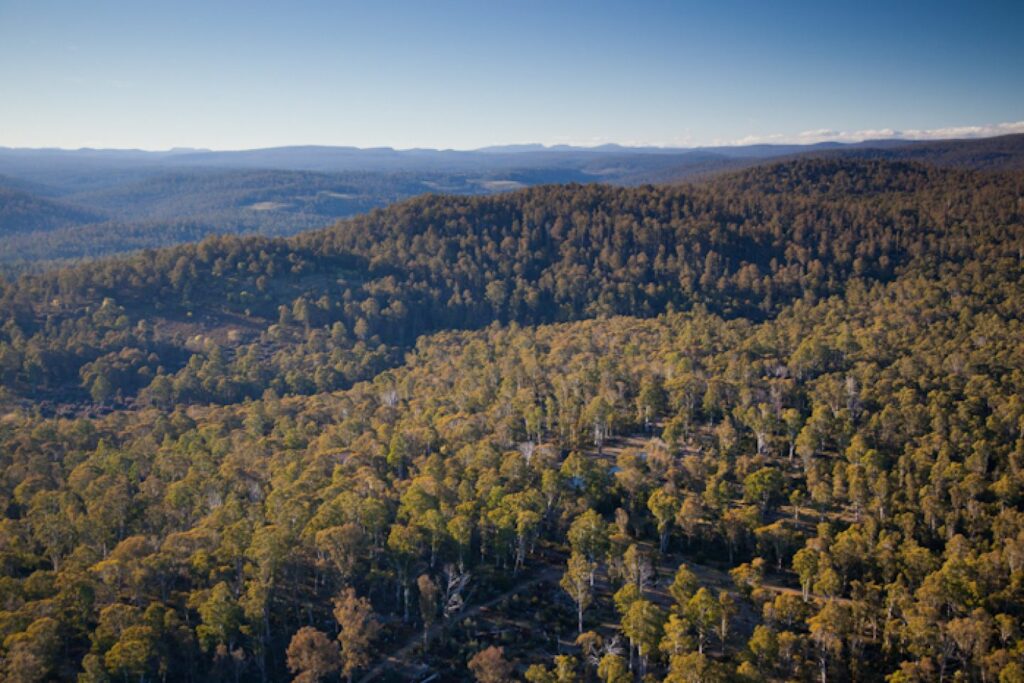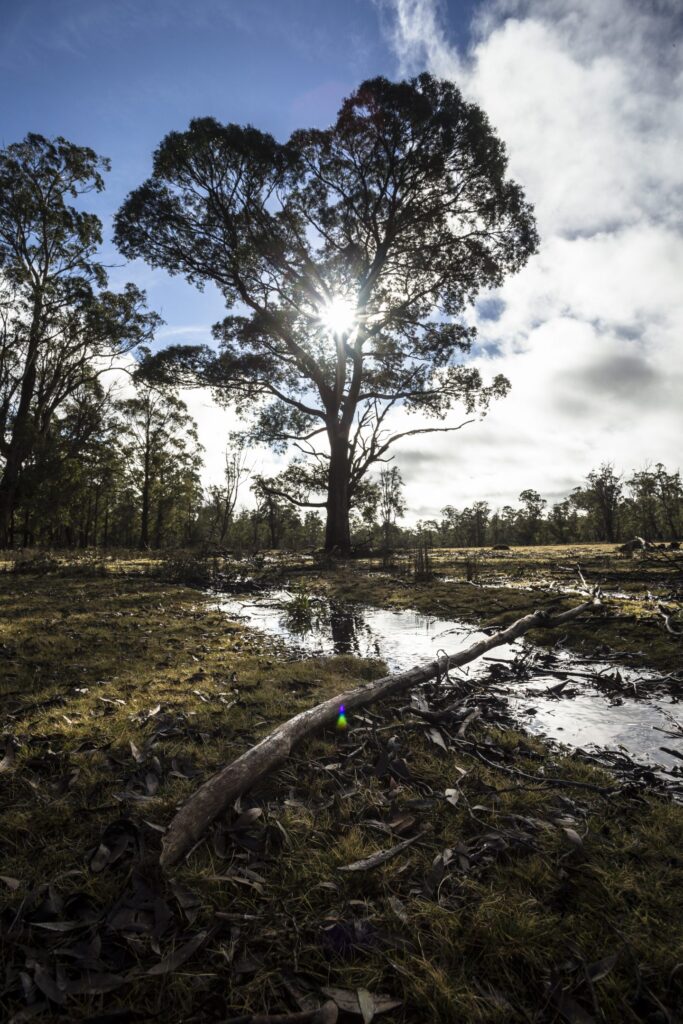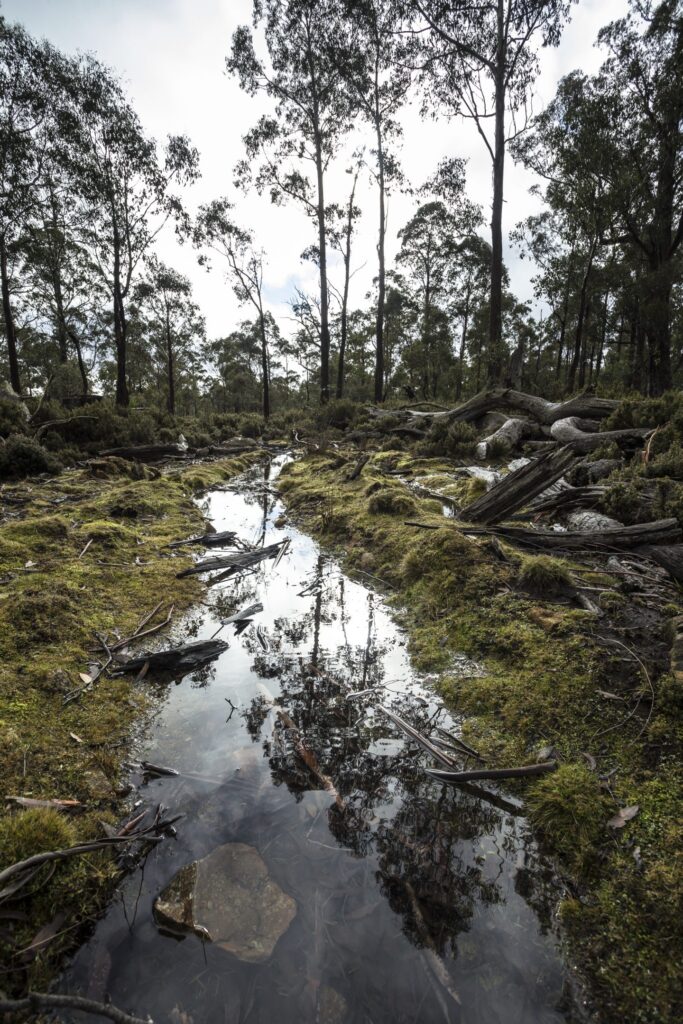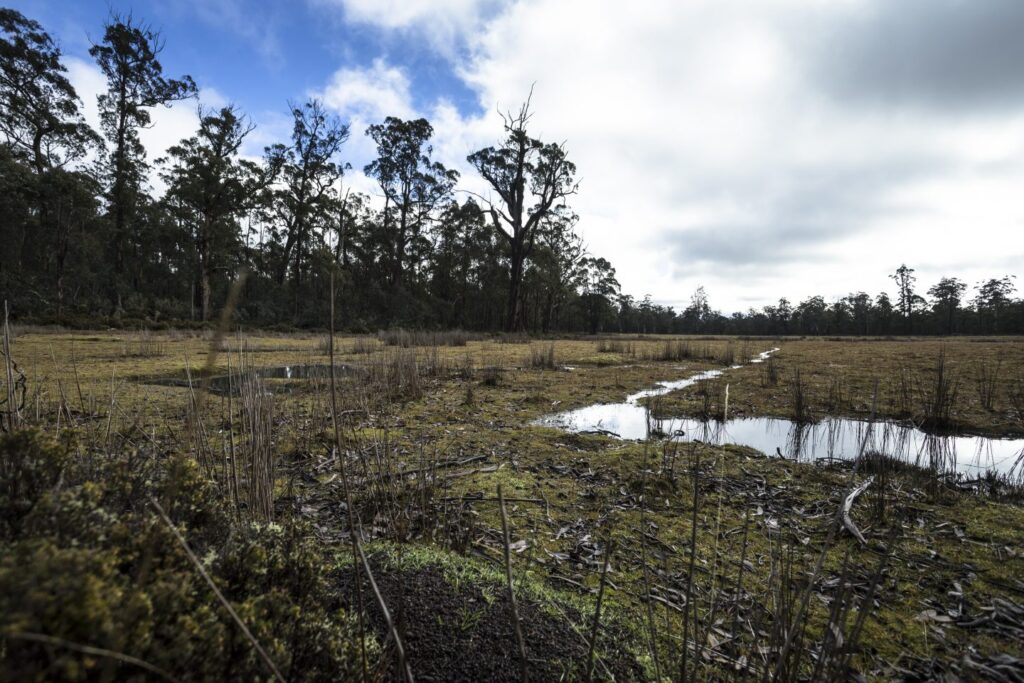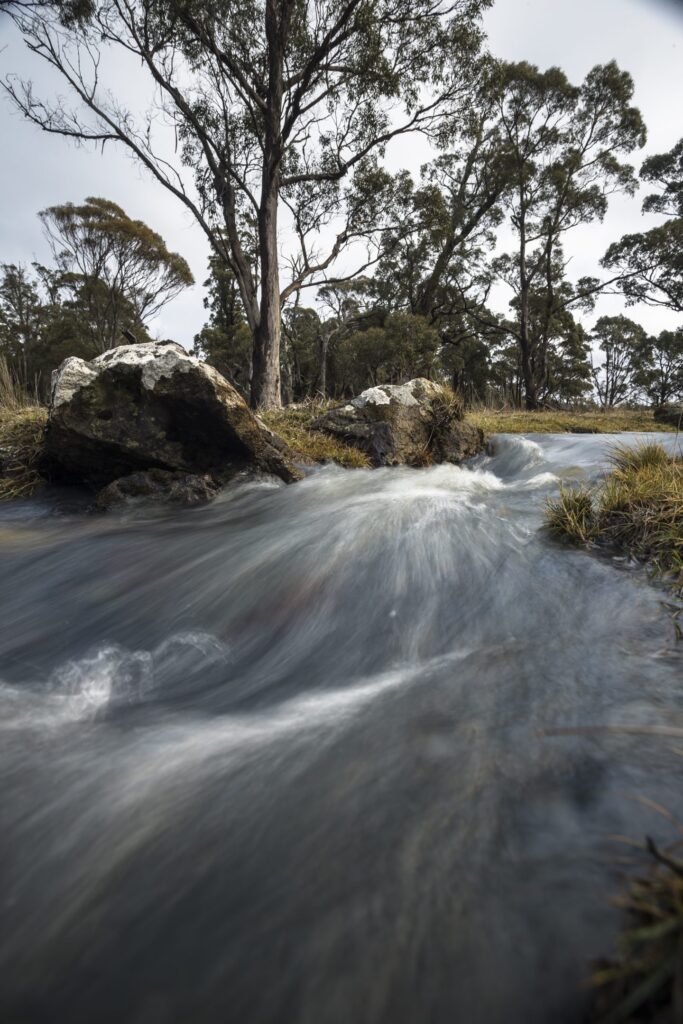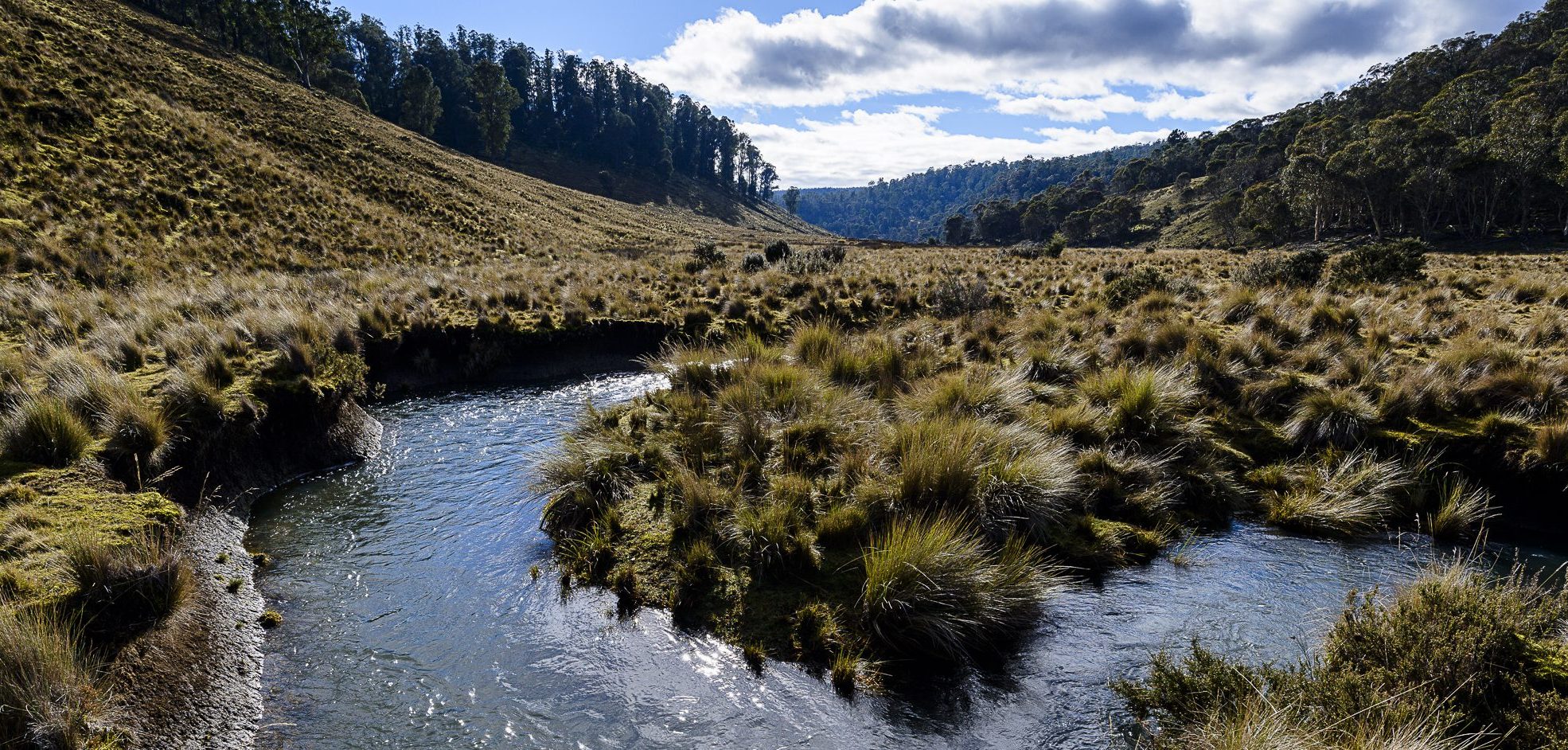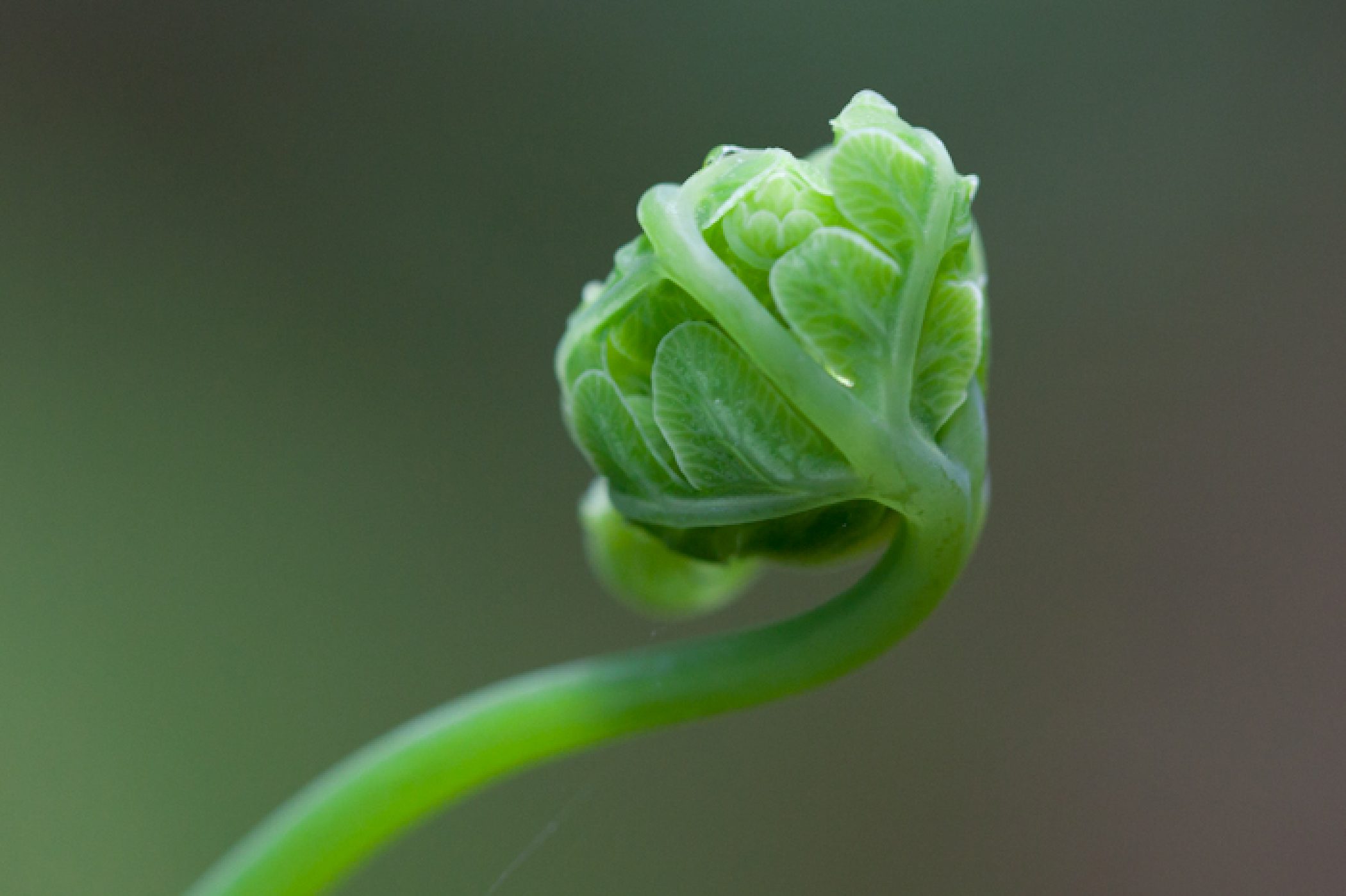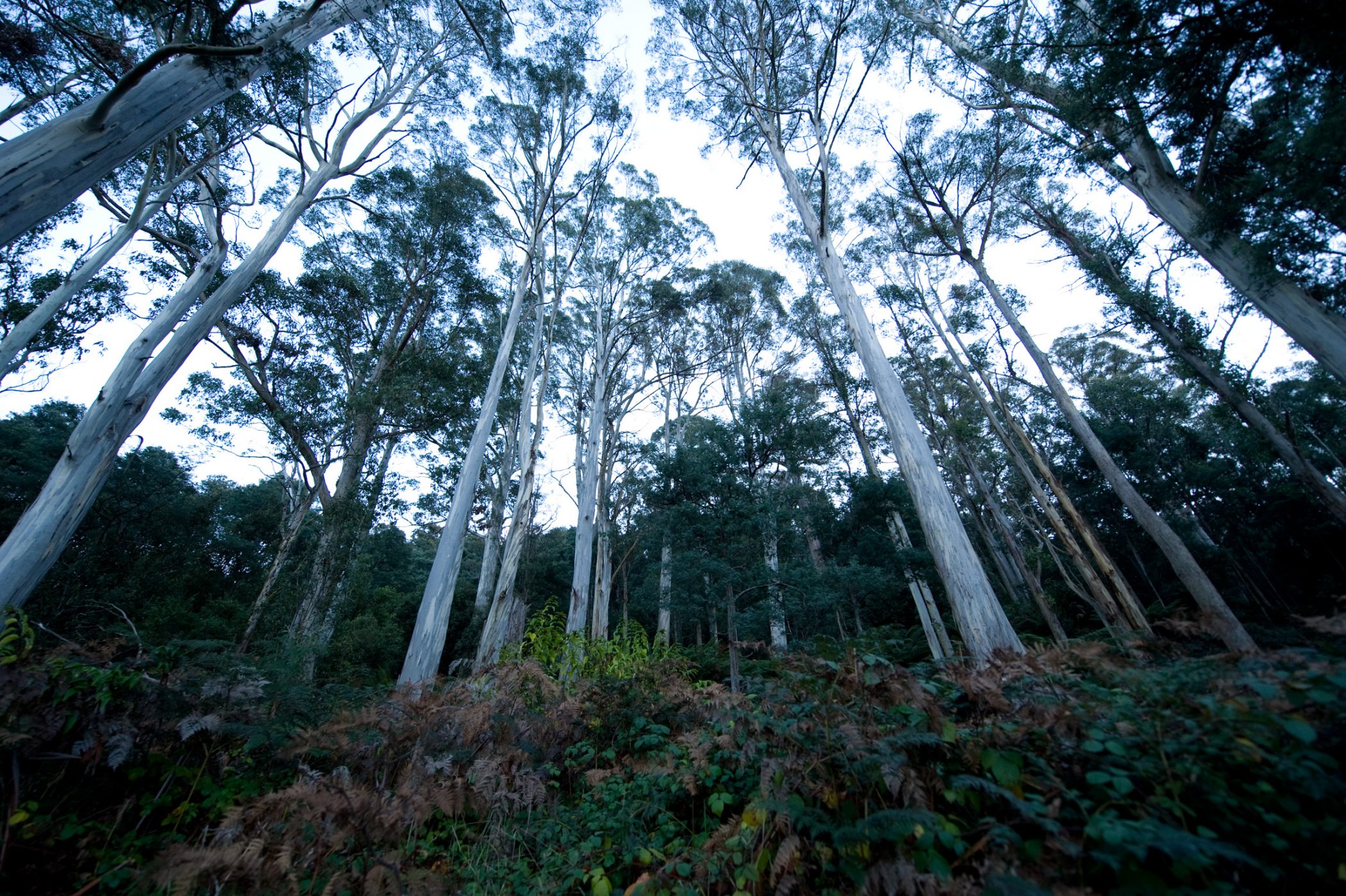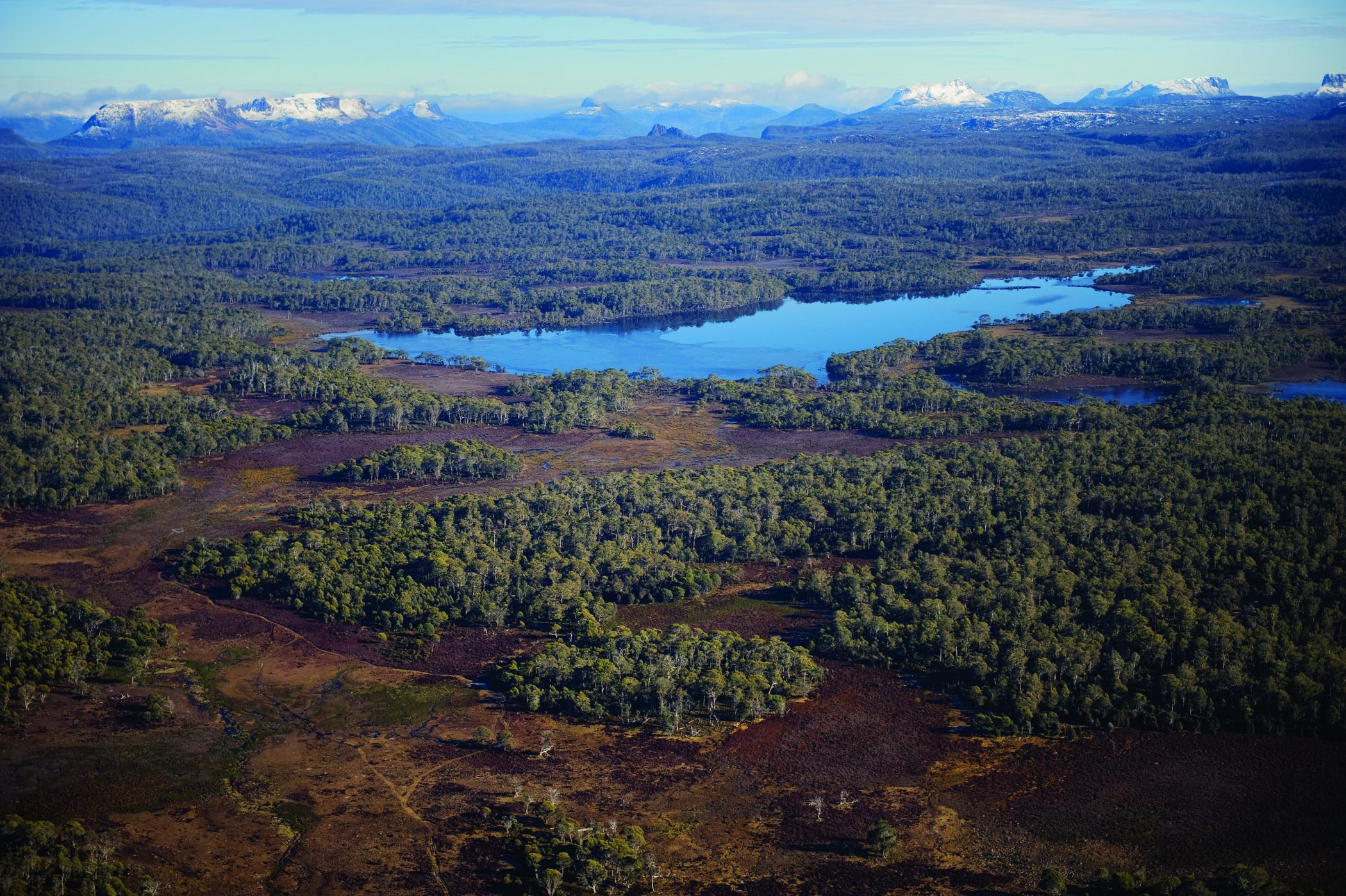The deal occurred when timber company Gunns Limited announced it would sell 28,000 hectares of its Tasmanian native forest estate. The property auction remains the largest ever in the state’s history, and the TLC took the opportunity to investigate how it could purchase as much of the land as possible for conservation purposes. What transpired produced unprecedented results for nature conservation, compelled unlikely partnerships, galvanised cultural connections and catapulted the TLC into innovative business ventures – all key features of what has since been dubbed the New Leaf project.
From the 28,000 hectares listed in the property sale announcement from Gunns, the TLC identified 27,390 hectares of important habitat across 34 properties on 94 titles. From serene, ancient old-growth rainforests in Tasmania’s north-east to sub-alpine forests, stunning lowland forests and intimate forested valleys in the state’s Central Highlands. Most of the properties had been used for commercial forestry but had the potential to be restored to high quality habitat for wildlife.
The properties were valued well beyond what the TLC could afford, coming in at $23 million. This resulted in the TLC’s CEO at the time, Nathan Males, to quickly begin negotiating.
“I was conscious, that Jan Cameron of the Elsie Cameron Foundation was also interested in the properties,” Nathan said.
Now based in Tasmania, Jan Cameron is a business woman behind a suite of organisations including the clothing and outdoor company Kathmandu. Jan’s known for her business acumen and philanthropic generosity to nature and animal welfare organisations.
“We were aware of her interest in carbon markets and didn’t want to bid against other people looking to purchase properties from a conservation view point,” Males said, explaining that Jan and the TLC subsequently attended the auctions together to avoid this from happening.
Without competition from the TLC, Jan was in some cases the only person bidding and had the tact to think about the land beyond its investment opportunity. This resulted in Jan gifting almost all the $4.7 million in land she bought at the auction to the TLC, in addition to loaning the TLC $14 million from the Elsie Cameron Foundation to assist in acquiring all its desired properties.
Rob and Sandy Purves of the Purves Environmental Fund also contributed to the TLC’s ambitious initiative and made a $500,000 gift and a $625,000 loan. The money from them, and other major, philanthropists was used to purchase a property that today is included in the TLC’s permanent reserve estate and forms part of the Tasmanian Wilderness World Heritage Area: Skullbone Plains Reserve.
As the ingenuity and complexity of the New Leaf project grew, so too did its reputation, with its achievements attracting national attention. Mining giant BHP Billiton wanted to invest $13 million to help ensure the TLC could secure another permanent reserve in the state’s central highlands by way of establishing an endowment fund. Subsequently, Five Rivers Reserve was born.
Fast forward to 2017-18, and the Five Rivers Endowment generated $240,000 in income for on-ground reserve management, science and research. From land destined for logging to conservation icons, Skullbone Plains Reserve and Five Rivers Reserve weren’t the only properties from the Gunns sale to be converted into a TLC reserve. Blue Tier Reserve and Liffey Reserve were also products of the New Leaf project, with the latter also being granted World Heritage status.
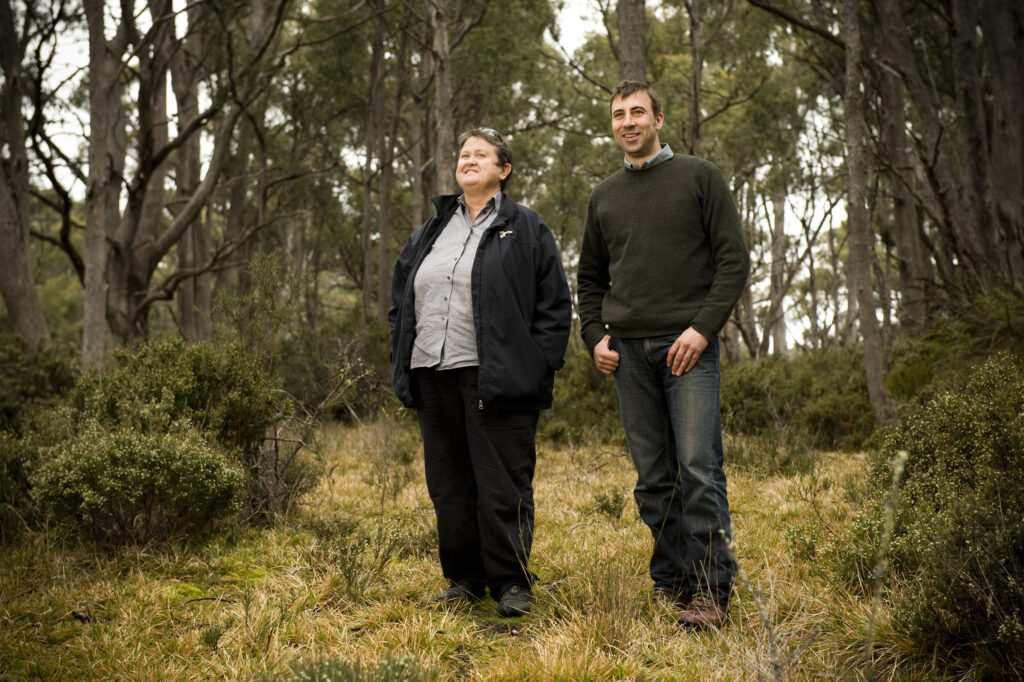
Rob and Sandy Purves of the Purves Environmental Fund also contributed to the TLC’s ambitious initiative and made a $500,000 gift and a $625,000 loan. The money from them, and other major, philanthropists was used to purchase a property that today is included in the TLC’s permanent reserve estate and forms part of the Tasmanian Wilderness World Heritage Area: Skullbone Plains Reserve.
As the ingenuity and complexity of the New Leaf project grew, so too did its reputation, with its achievements attracting national attention. Mining giant BHP Billiton wanted to invest $13 million to help ensure the TLC could secure another permanent reserve in the state’s central highlands by way of establishing an endowment fund. Subsequently, Five Rivers Reserve was born.
Fast forward to 2017-18, and the Five Rivers Endowment generated $240,000 in income for on-ground reserve management, science and research. From land destined for logging to conservation icons, Skullbone Plains Reserve and Five Rivers Reserve weren’t the only properties from the Gunns sale to be converted into a TLC reserve. Blue Tier Reserve and Liffey Reserve were also products of the New Leaf project, with the latter also being granted World Heritage status.
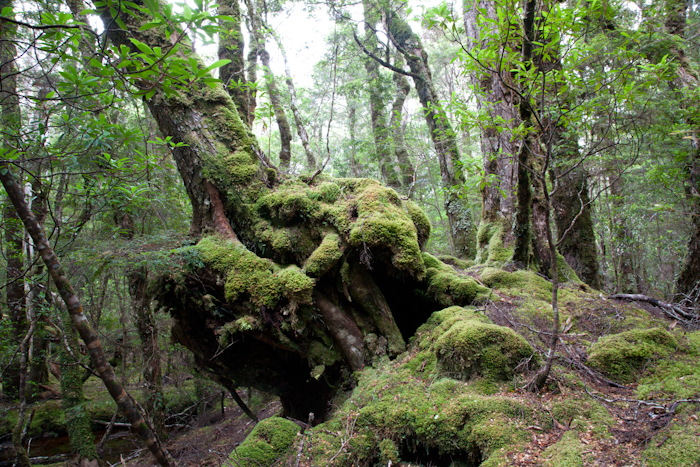
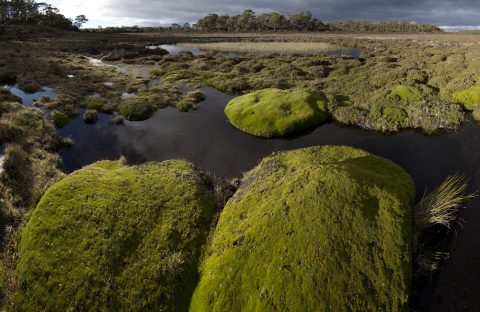

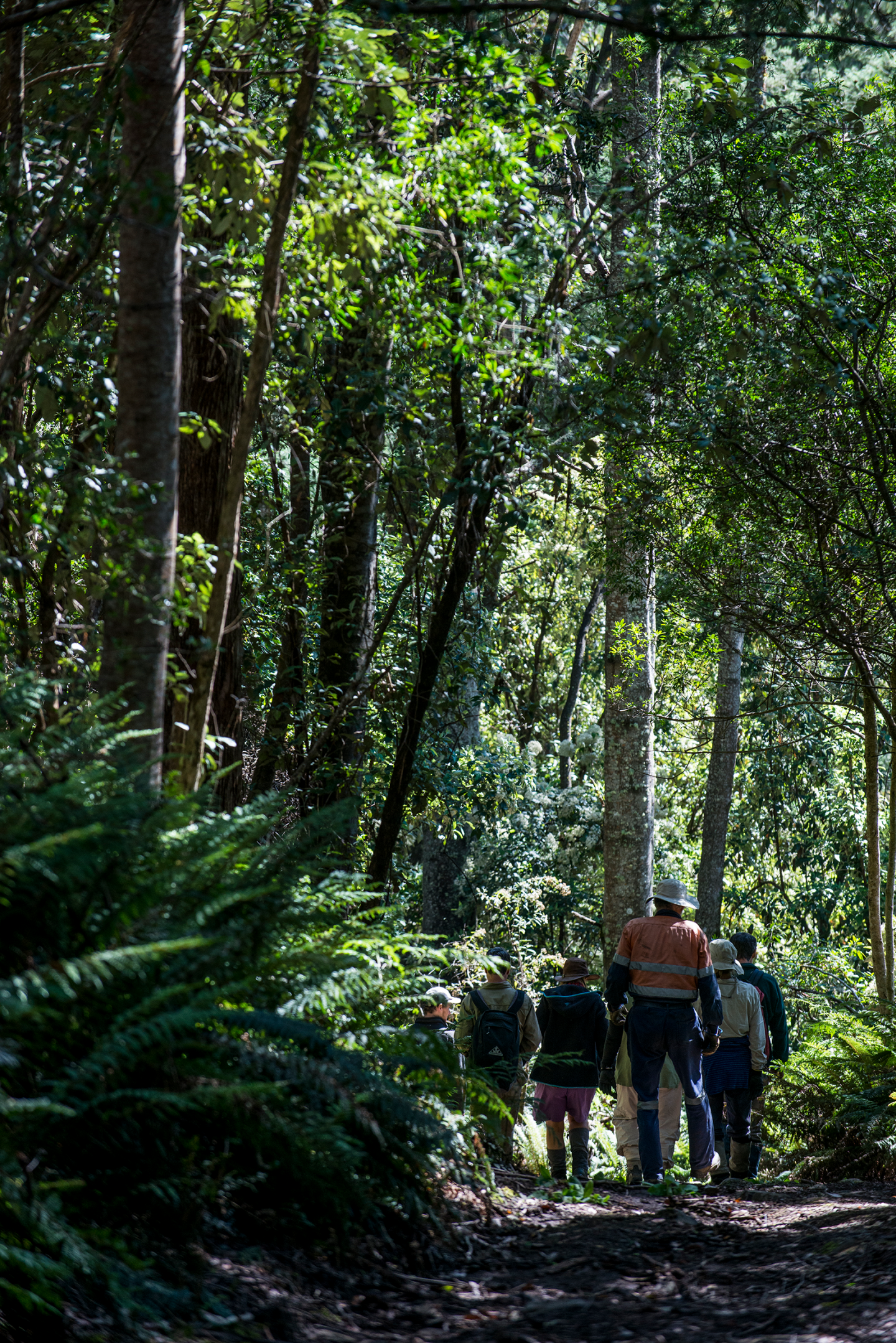
With a whopping 27,390 hectares under management, the TLC had the mammoth task of raising the money needed to manage the newly acquired land. In a move to pay back the loans, properties were identified that could be covenanted with conservation agreements and on-sold to ecologically minded buyers using the TLC’s Revolving Fund mechanism. So far, a total of 14 properties spanning 3,712 hectares have been sold this way since 2010.
Virgin Australia was another organisation that was drawn to the TLC’s innovative business model, and in 2014 a carbon offsetting partnership was launched that provided all Virgin Australia customers with the option to neutralise the emissions of their flights by directly supporting work of the TLC’s New Leaf properties. The carbon offsetting scheme now delivers about 7 per cent of the organisation’s overall income each year.
Amidst a collection of watershed moments for nature conservation, the TLC has continued to grow. While the New Leaf Project is no longer the biggest private conservation deal in Australia’s history (in 2019 it was trumped by a project spearheaded by The Nature Conservancy, who purchased 33,000 hectare in the Murray Darling region) the project exemplifies how the TLC is leading the way to create ambitious solutions to conservation challenges while fostering a culture of inquiry, science and research to actively contribute to Tasmania being a global leader in nature conservation.
